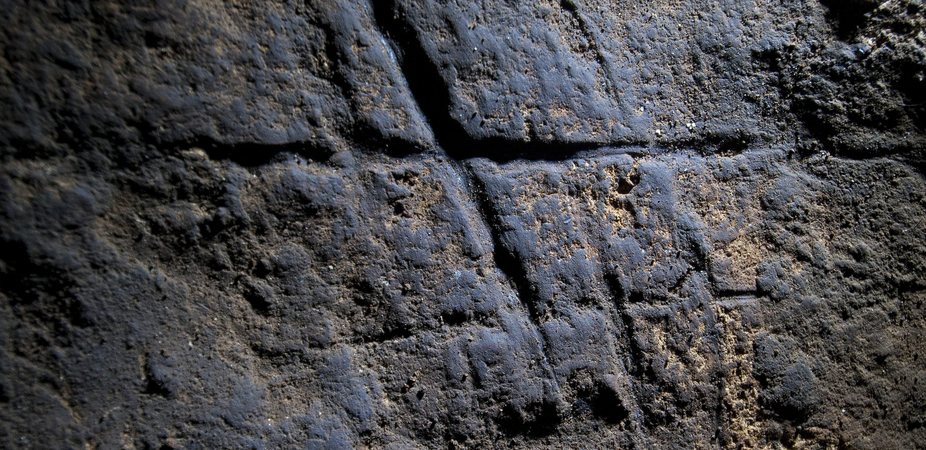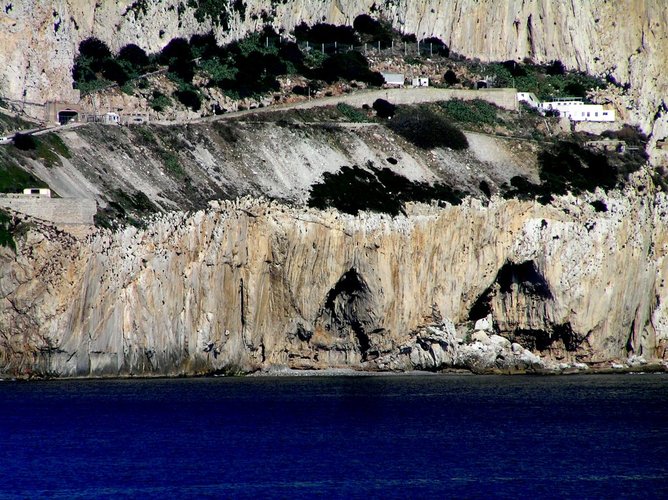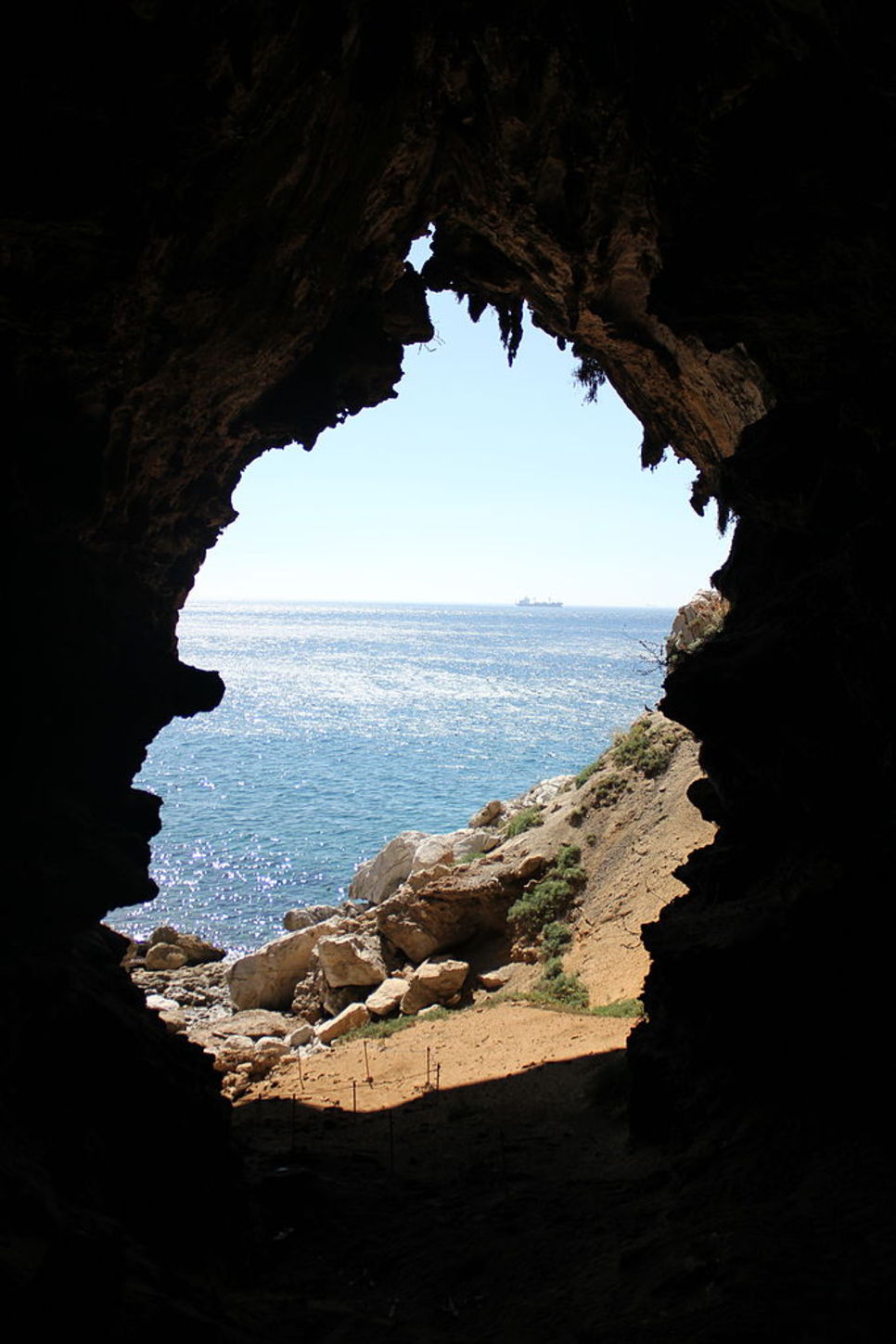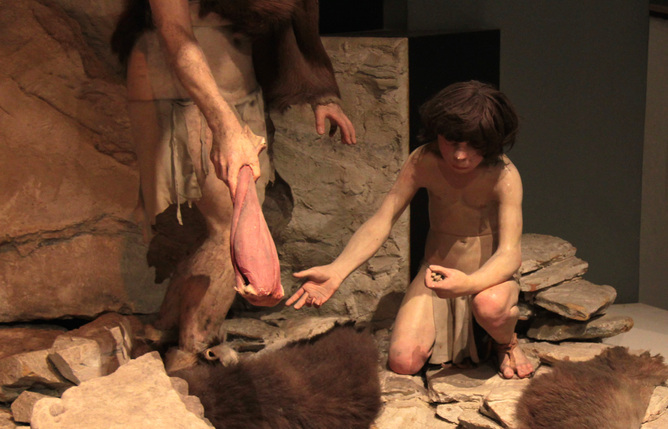
Is Rock 'Hashtag' Really Neanderthal Art? (Op-Ed)

This article was originally published at The Conversation. The publication contributed the article to Live Science's Expert Voices: Op-Ed & Insights.
There has been much excitement over recent reports that something found in a cave in Gibraltar is the first known example of Neanderthal art. But what exactly has been found, can it be believed and, if so, why is it important?
The creation of any form of cave art has traditionally been attributed to the arrival of early modern humans. So any claim that Neanderthals had the cognitive ability to also scratch out some art certainly deserves further investigation.
The discovery consists of 13 marks carved into the bedrock of Gorham’s Cave, Gibraltar. They are of uneven depth and their appearance is similar to that of the hashtag mark (#) familiar to Twitter users.
Careful analysis appears to have shown that the marks were made by repeatedly cutting into the bedrock with pointed stone tools, according to the research published this month in the Proceedings of the National Academy of Sciences. The research team’s experiments show that there was considerable difficulty in reproducing marks as wide and as deep as the prehistoric ones, supporting the interpretation that these marks were made deliberately.
This is important because it is well known that bears and other animals marked the walls of caves when the rock was soft enough. Bear bones have been found in previous excavations at this site.
Such bear scratches have been reported underlying the paintings at Chauvet Cave in France which are among the oldest in Europe.
Other claims for Neanderthal art – that a red dot painted in Castillo Cave in northern Spain was made at a time when Neanderthals still lived in Spain – have been made before and discussed by me.
So can the new discovery be believed?
The dating of the new find depends on the fact that it was covered by sediments in the cave. The study’s authors say they were deposited more than 39,000 years ago, and contain the sorts of stone tools, called Mousterian, that were once said to define Neanderthals.
But this claim is problematic. First, the radiocarbon dates obtained from the layer above the marks are rather mixed, with younger dates found below older dates, even in an area claimed to have been a hearth.

This means that it would be possible to argue that the sediments were redeposited some time after the latest date (about 29,000 years ago).
The second question is about the attribution of the stone tools in the layer to the Mousterian industry. The numbers of stone tools are quite small and there are very few diagnostic pieces. It is certainly the simplest hypothesis to attribute them to this industry, but it is by no means clear-cut.
Moreover, it continues to be a problem that in the east Mediterranean clearly Mousterian industries were associated with modern humans some time around 100,000 years ago.
Two recent papers established a date for the last Neanderthals in Spain or other parts of Europe between 41,000 and 39,000 years ago. In reality, these are dates for the last Mousterian industries in Europe.
Attempts to resolve the dating of Gorham’s Cave during this project showed that the samples were difficult to analyse.
At least, these caveats suggest that the attribution of the marks to Neanderthals is not quite as straightforward as it has been presented. As with the previous claim for Neanderthal art, it would seem that some people are willing scientists to show the similarities between us and our last European relatives.
The third point is that we cannot just assert a belief that Neanderthals had all the abilities of modern humans – it is something that needs to be demonstrated.
At the moment, then, it would be premature to state positively that the etched marks in Gorham’s Cave were made by Neanderthals.
But is it really art?
The question “what is art?” is always open to challenge because meanings are context-dependent. It is clear that these marks are not representational of any stick figures in any simple sense, so the question of whether they could have had a symbolic intent depends on understanding how such symbolism might have been understood.
The first issue is about repetition. Some have suggested that there is a link to the similarly cross-hatched rocks from Blombos Cave overlooking the Antarctic Ocean in South Africa.
In this case, there is more than one example, and similar markings have been found at other sites that date at least 75,000 years ago.

The second issue is about how the makers of the marks (if they were not bears) might have persuaded their companions about their intent. This might have been possible through ritual, but it is not straightforward to identify that in the archaeological record. It would be easier to be convinced if there were other similar marks that might be the result of the repetitive aspects of ritual.
A third point is a claim in the Gibraltar research that such marks indicate “abstract thought and expression”. Most people who talk about such things do not define what they mean by “abstract”.
Most probably the use of the word derives informally from an argument of the form that art in our world is either representational or abstract – but these marks are not representational, therefore they must have been abstract.
An alternative argument is that the similarity of such markings with examples from the relevant time period in Africa, Western Asia and Europe results from some common functionality in making such marks.
It is possible that in these cases, the repeated making of marks could be related to the emergence of an ability for counting.
What an ‘art’ find means for human evolution
If the Gibraltar find is evidence of symbolic behaviour among Neanderthals then it brings the focus back to the evolution of human cognition.
The 19th-century claim for cognitive inferiority of Neanderthals relied on contradictory and confused arguments about anatomy as well as prejudices about living populations.

The contradiction and confusion began to be replaced in the 1970s and the gap between modern humans and Neanderthals narrowed, but did not disappear. Several scholars argued that the differences were related to a difference in the capacity for language.
Others pointed out that speech became language when the utterances became symbolic so that the crucial evidence was about the existence of symbols.
Genetic studies using DNA extracted from fossils of Neanderthals have sharpened the picture. These show that, in the 5,000 years before extinction, some interbreeding with modern humans happened. They also show that during the 300,000 years that the two populations were completely separated, natural selection operated to produce reduced fertility in male hybrids.
The question, then, is whether natural selection also led to a change in behaviour or cognition. The answer to that question depends on the theoretical assumptions that are brought to the study of cognition in general, and in particular how cognition might have been different for different ancestral species.
It seems likely that the initial populations that diverged from the last common ancestor had similar cognitive abilities at the time, but those abilities became more like ours earlier in Africa before modern humans arrived in Europe.
So this find in Gibraltar, like many others, needs to be evaluated critically from the point of view of the archaeology, and it needs to be interpreted cautiously in light of well-developed theory of cognitive evolution.
By itself it is not a game-changer, but if similar marks are found in other Spanish sites, with clear attribution to Neanderthals, we may have to change the way we think about our cognitive evolution.
Iain Davidson has received funding from the ARC, AIATSIS, and the Wenner-Gren Foundation. He is affiliated with UNE (Australia), Flinders University, Arizona State University, and the University of Colorado, Colorado Springs.
This article was originally published on The Conversation. Read the original article. Follow all of the Expert Voices issues and debates — and become part of the discussion — on Facebook, Twitter and Google +. The views expressed are those of the author and do not necessarily reflect the views of the publisher. This version of the article was originally published on Live Science.
Sign up for the Live Science daily newsletter now
Get the world’s most fascinating discoveries delivered straight to your inbox.











